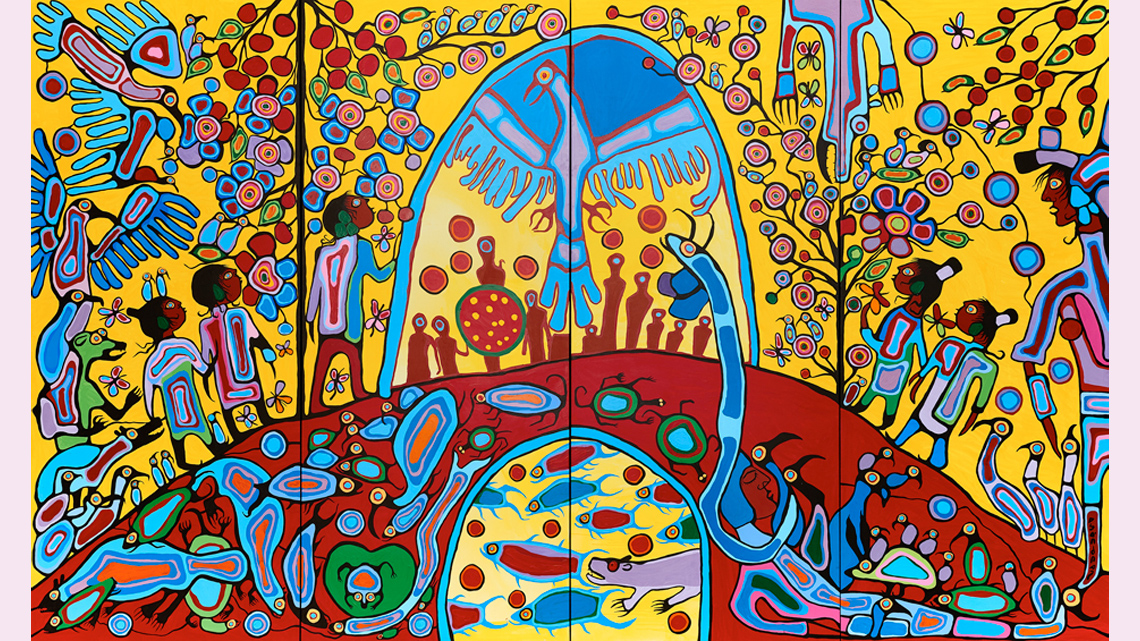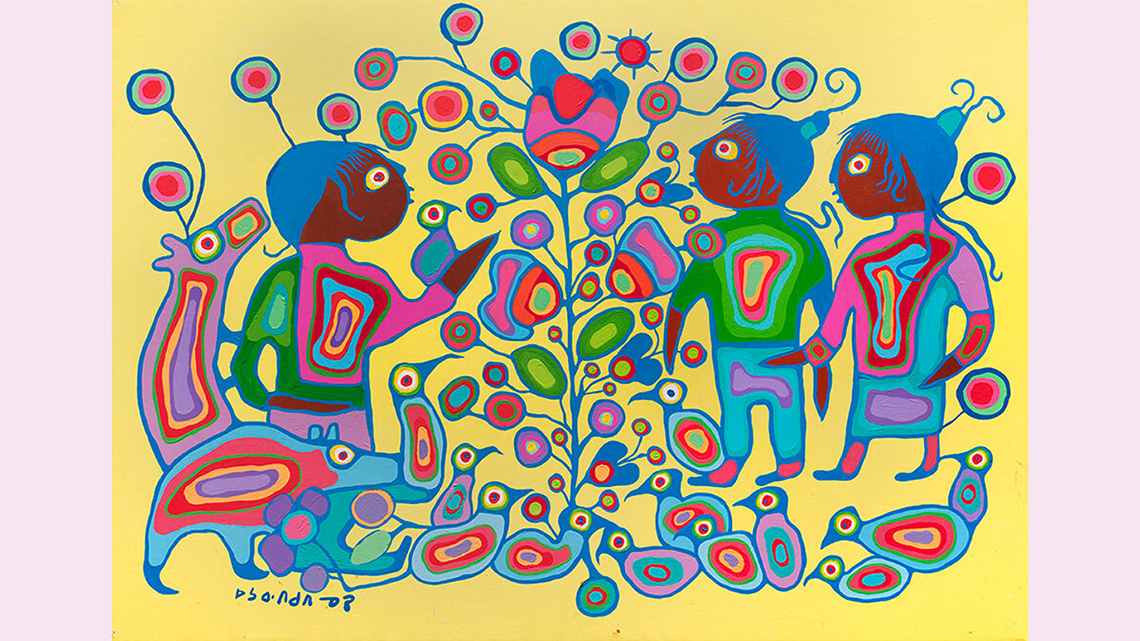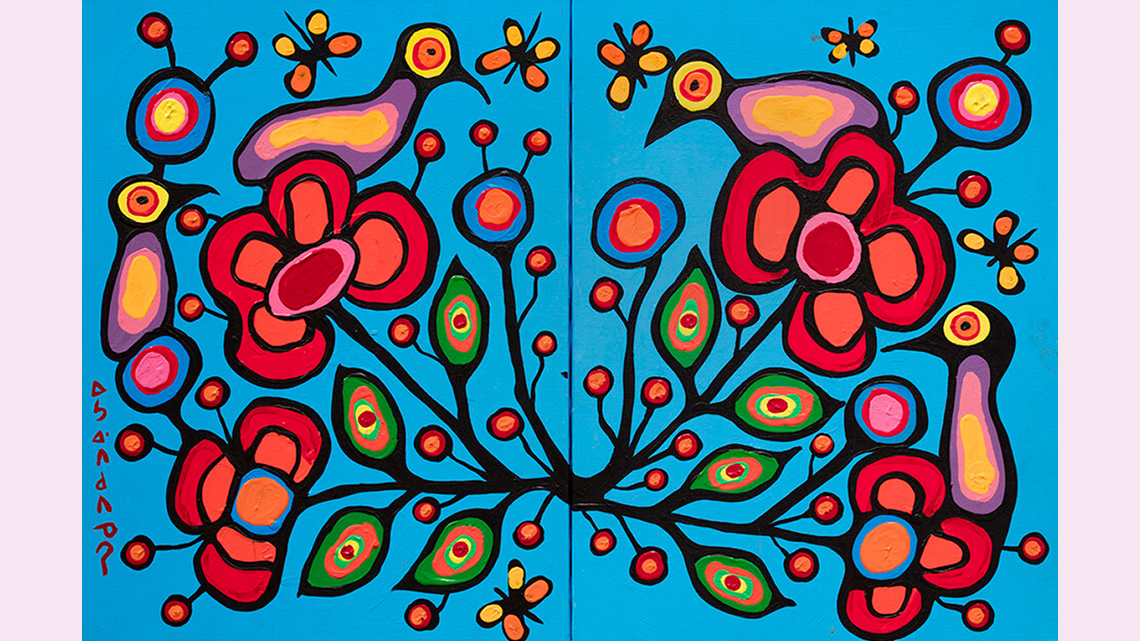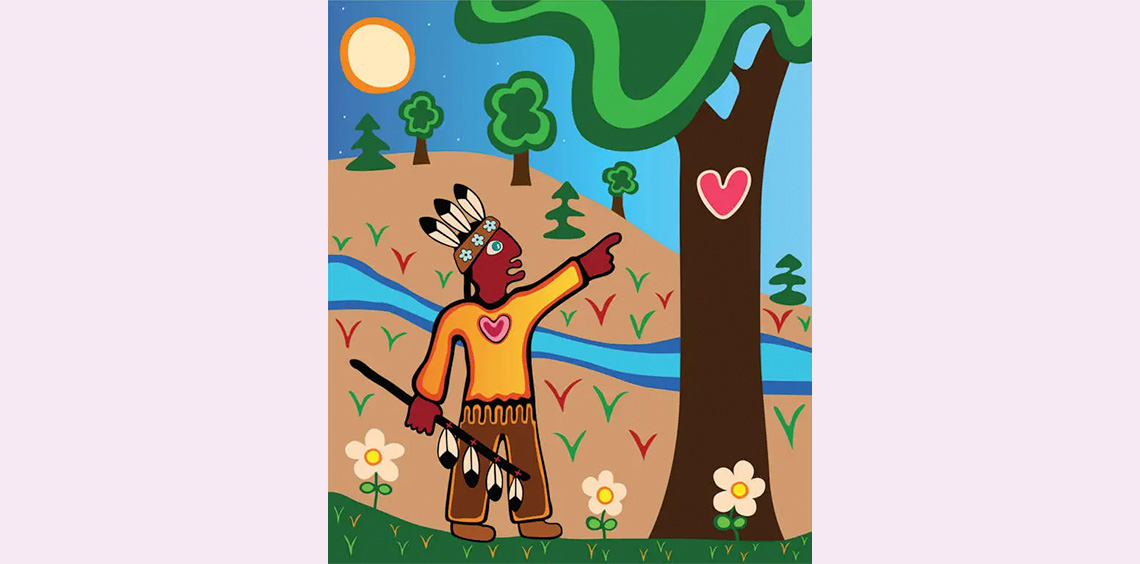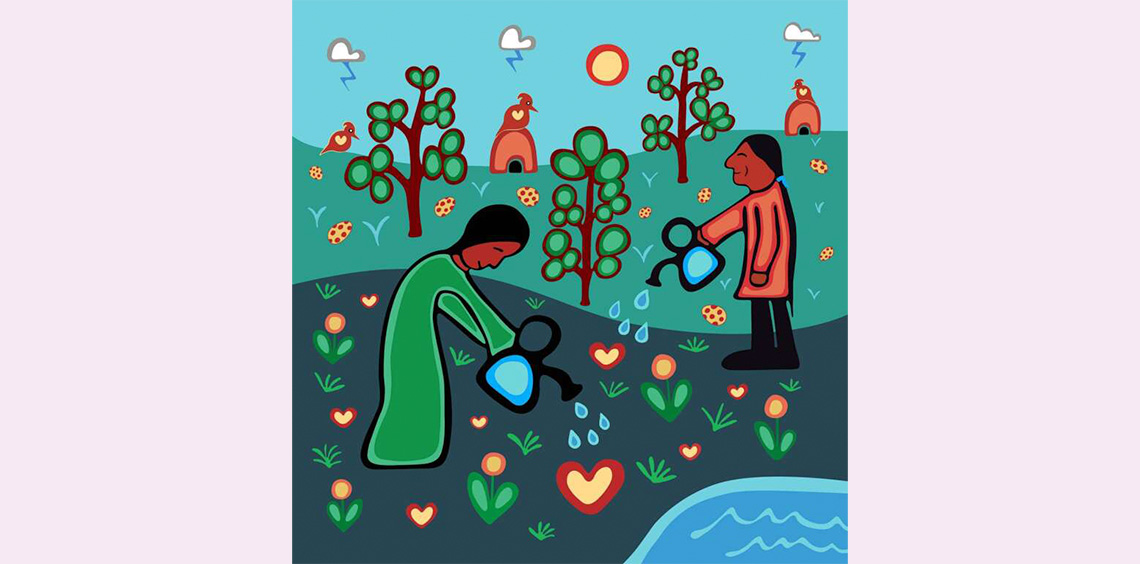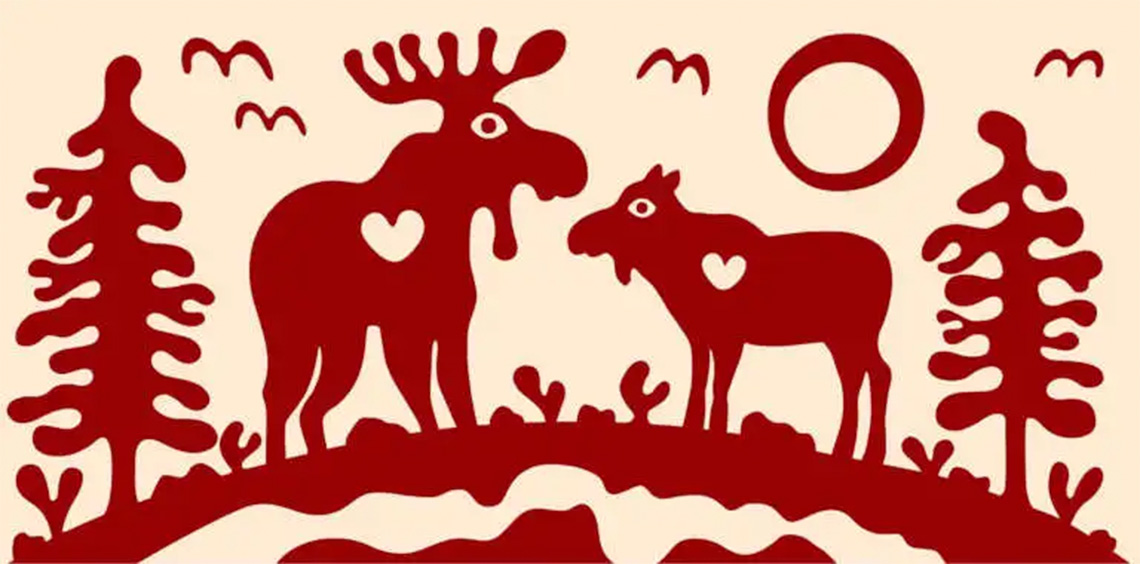Minds On
Notice and connect
Artists are like scientists. They make careful observations. They share what they observe with others.
Many Indigenous artists get ideas from the other people in their community. They also get ideas from traditions. This can include connections between living and non-living things in nature.
Many people believe that all living things are connected. They believe that nature and the land must be respected and cared for.

Norval Morrisseau
Norval Morrisseau was an Indigenous artist. He was born in Sand Point reserve. This is a First Nations community near Lake Nipigon, Ontario. He learned from his grandfather Moses Potan Nanakonagos about his culture and spiritual beliefs.
Next, Morrisseau taught himself about art. He had his own style of painting. He wanted to show how living things are connected.
He created Woodland Art. His art was also called medicine painting. It shows creation stories.
His art also shares the relationships between animals, people, creation, and the environment.
Did You Know?
What is a creation story?
All Indigenous communities have their own creation stories. The creation stories share how the world began and how the Indigenous communities came to be in the world.
Explore the following carousel of artwork created by Norval Morrisseau.
Complete the Notice and Connect Activity in your notebook or using the following fillable and printable document. If you would like, you can use speech-to-text or audio recording tools to record your thoughts.

Press the Activity button to access the Notice and Connect Activity.
Activity (Open PDF in a new window)Action
The importance of plants
Did you know that plants can be used as food, shelter, clothing, and medicine?
We are now going to explore images and descriptions of plants that are native to Canada. This means these plants grow naturally in Canada and have for hundreds or thousands of years.
As you explore, consider the following questions:
- How might the plants be used by Indigenous peoples?
- Could they be used for food, shelter, clothing, or medicine? Or could they be used for all of those things?
Pawpaw tree
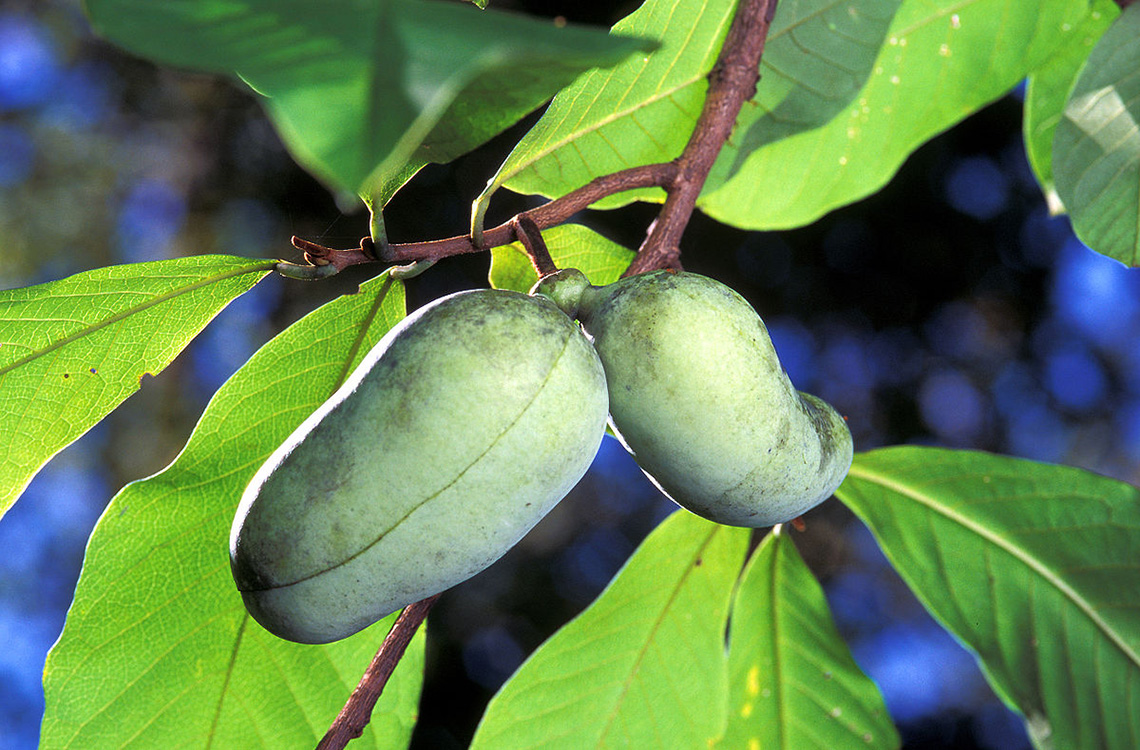
Select the correct answer, then press ‘Check Answer’ to see how you did.
Press ‘Use of Pawpaw’ for more information about how the Indigenous peoples use this plant.
- Sometimes Indigenous peoples ate the sweet, ripe fruit.
- Other parts of the plant were used as medicine. It was used to treat things like sores on skin.
Eastern white pine
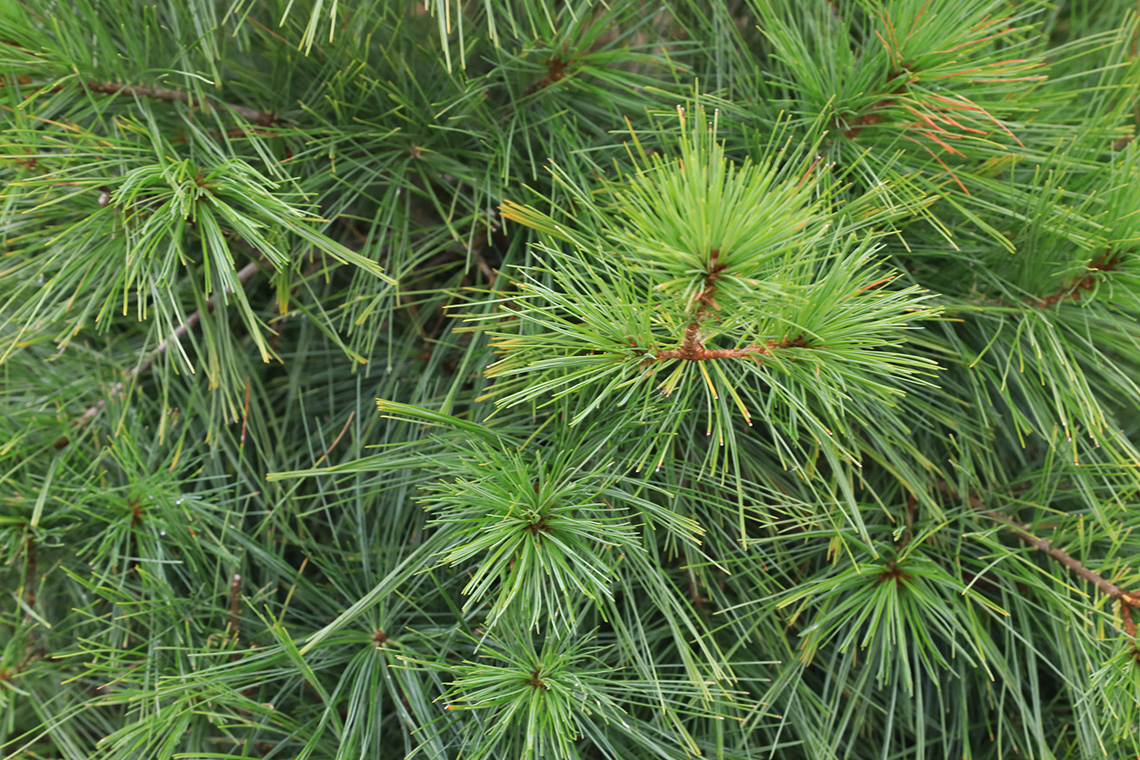
Select the correct answer, then press ‘Check Answer’ to see how you did.
Press ‘Use of Eastern White Pine’ for information about how the Indigenous peoples use this plant.
Parts of the eastern white pine could be used to make a tea. The tea might be used to help cure diseases.
Stinging nettle
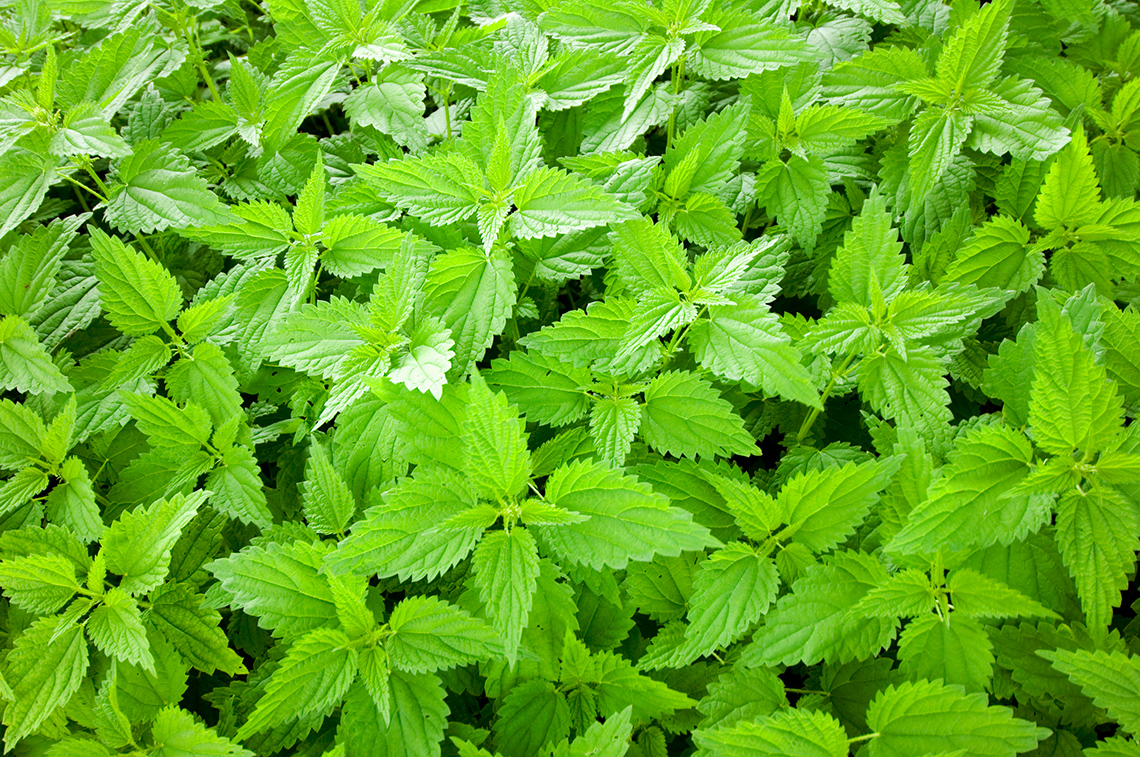
Select the correct answer, then press ‘Check Answer’ to see how you did.
Press ‘Use of Stinging Nettle’ for information about how the Indigenous peoples use this plant.
- Stinging nettle can be cooked and eaten. It is high in vitamins and minerals. It can be used in soups and stir fries.
- It can also be used in baths to help people who have aches and pains.
- Other uses: When the stinging nettle plant gets old, it can be used to make fishing lines and nets for fishing.
Birch tree
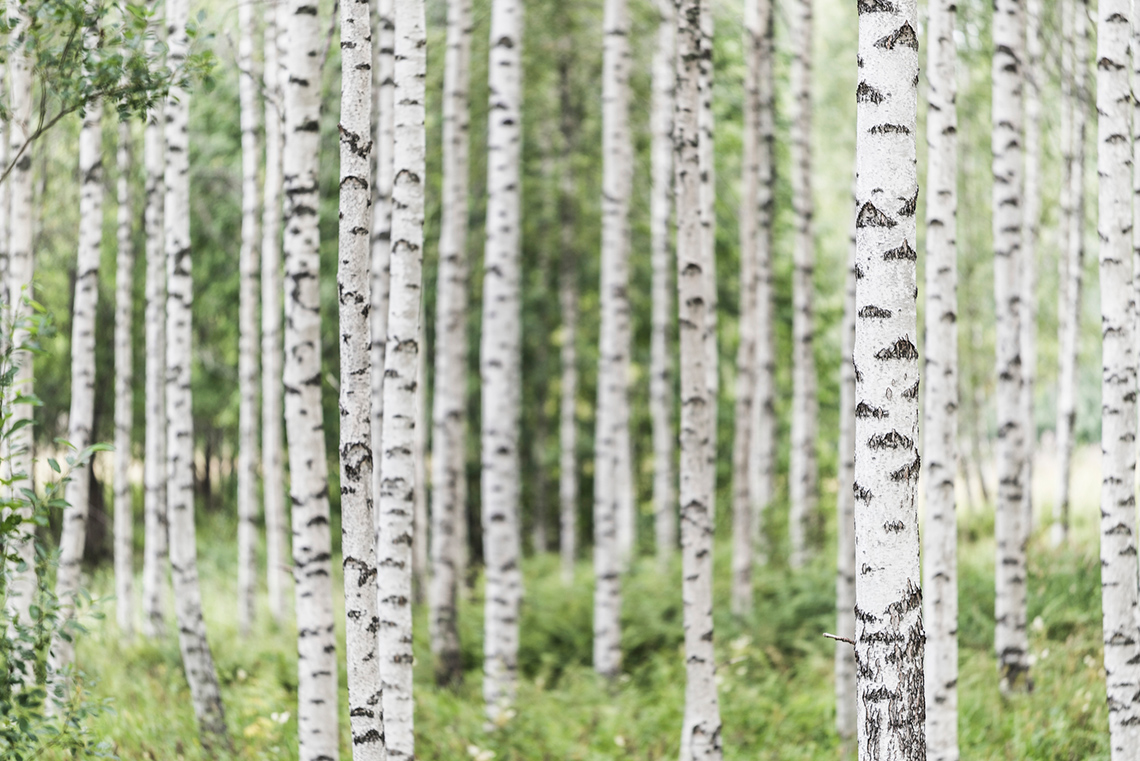
Select the correct answer, then press ‘Check Answer’ to see how you did.
Press ‘Use of Birch Tree’ for information about how the Indigenous peoples use this plant.
- First Nations ground the bark of the birch tree into flour. They use the flour to make bread and to put in soups. Syrup from the birch tree was used on pancakes.
- Birch bark was used by the Algonquin First Nations peoples to cover their wigwams for shelter.
- Birch bark biting is an art form used as decorate different items, such as clothing and moccasins.
- The leaves of the birch tree were used to treat insect bites. The bark can be made into a tea for stomach problems.
- Other uses: Birch bark was also used to make canoes. It was also used to make bowls, baskets, and paper.
Moss
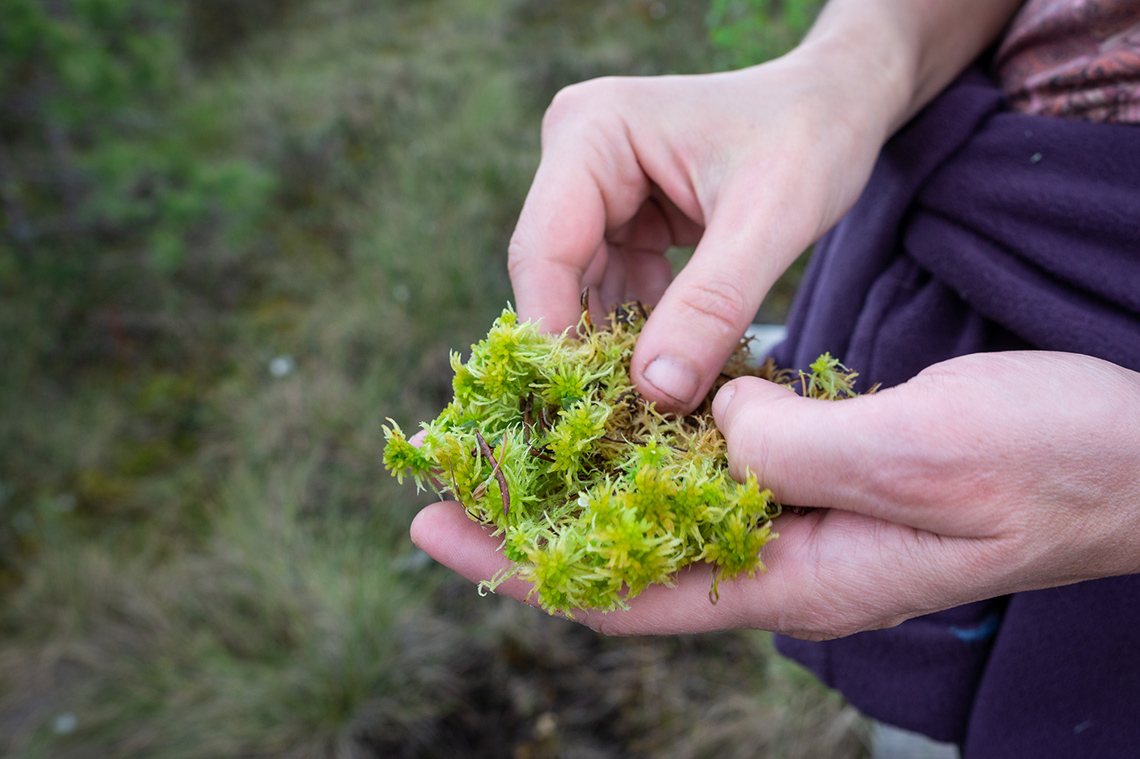
Select the correct answer, then press ‘Check Answer’ to see how you did.
Press ‘Use of Moss’ to access information about what the Indigenous peoples use moss for.
- Moss was sometimes used to fill cracks in log house walls and roofs.
- Moss was stuffed into cloth bags to be used as diapers.
- Other uses: wet moss was used for washing dishes and cleaning hands. Sometimes moss was hung in trees so people could know the path to follow.
Connections
Two-Eyed Seeing
Mi’kmaw Elder Albert Marshall introduced a way of learning called Two-Eyed Seeing. We learn to see “from one eye with the strengths of Indigenous knowledges and ways of knowing, and from the other eye with the strengths of Western knowledges and ways of knowing.” This means we look at problems using what we know from Indigenous traditions and ways of knowing. This is the one eye. We also use what we know from Western traditions and ways of knowing. This is the second eye.
Record answers to the following questions using a method of your choice:
- Are there plants that can be used for different things?
- What is one way you use plants in your daily life?
- Why do you think it might be important to protect plants that are native to Canada?
Press ‘Native Plants’ to access a definition.
Native plants are plants that grow naturally in a specific area and have for hundreds or thousands of years.
Creating art sustainably
Norval Morrisseau wanted to share Anishinaabe values and worldviews. Part of Anishinaabe worldview is about taking care of and respecting the Earth.
The word “sustainability” means that we only use what we need to make sure there will be enough resources left for the future.

Beam Paints is a company located on the M’Chigeeng First Nation on Manitoulin Island in Northern Ontario. Beam Paints produces art materials.
Anong Beam is the owner. Her parents taught her how to create paints using materials found in nature using traditional Indigenous techniques.
The paints are made in ways that does not waste natural resources. The paints are wrapped in paper instead of plastic.
It is important to think about where art supplies come from. It is also important to think about whether materials are safe and recyclable.
Explore the following video entitled “Indigenous Art Experiences” to learn more about how art can be created sustainably.
Pause and Reflect
Sustainable art
- Can you think of any other materials that could be found in nature and used for art?
- What is important to think about when choosing art materials?
- What should you consider when using nature for art?
Record your answers using a method of your choice.
Press ‘Answer’ to access possible responses to check your understanding.
|
1. |
Perhaps you thought of: dirt or soil, leaves, branches or twigs that have fallen off trees, snow, sand, etc. |
|---|---|
|
2. |
It is important to think about what your art materials are made from and if they are good for the environment. |
|
3. |
You need to consider what you are taking from the environment and that you are not damaging living organisms. |
Indigenous artists
Spending time in nature, or exploring images of nature, can help a person feel good. It can also inspire them to create beautiful art. Let’s explore artwork that was inspired by nature.
Press the following tabs for examples of artwork from Indigenous artists.
Isaac Murdoch
Isaac Murdoch is Ojibway from Serpent River First Nation. He is a storyteller and traditional knowledge keeper.
Isaac shares how people can learn from the land. He explains how connecting to nature can help our relationship with the land.
Explore the following carousel of Isaac Murdoch’s work.
Student Success
Analyzing art
- What in the previous artwork gives you an idea of how the artists might look at nature or the environment?
- What do you think the artists want their audience to know about the environment?
- How might this artwork inspire you to protect nature and the environment?
If possible, share your ideas with someone else.
Note to teachers: See your teacher guide for collaboration tools, ideas and suggestions.
Consolidation
Creating art and taking action!

As an artist and a scientist, I need to think about:
- how to collect my observations
- how to plan my designs
- the materials I will need (i.e., recycled objects, found objects, drawing tools)
- how to create my designs without wasting materials
Try It
Next steps
Now, it’s time to use what you have learned to create your own piece of art!
You might choose to explore:
- nature in your own surroundings
- an image of something in nature
- any of the art you explored in this learning activity.
Think about how you might include ideas from your own life, culture, or community into your art.
How might these ideas inspire others to protect the environment for future generations?
Explore and select one of the following options for creating your piece of art.
Option 1: Audio recording
Record a detailed description of what your art would be like.
Consider what parts of nature you might include and how your design could inspire others to protect the environment.
You may use the following questions to help guide you:
Option 2: Digital creation
Consider what parts of nature you might include and how your design could inspire others to protect the environment.
Use a digital format to create a collage of images. Your images should represent the parts of nature you would like to reflect.
You may use the following questions to help guide you:
Option 3: Create with materials
Using materials of your choice, create a piece of art that shares the parts of nature you would like to celebrate. As you get started, consider how your design can also inspire others to protect the environment.
Possible materials might include: paint, crayons, pencil crayons, water, nature, paper, canvas, etc.
You may use the following questions to help guide you:
Pause and Reflect
Art and science
- How are art and science connected?
Record your response using a method of your choice and be sure to explain using examples from the learning activity.
Reflection
How do you feel about what you have learned in this activity? Which of the next four sentences best matches how you are feeling about your learning? Press the button that is beside this sentence.
I feel…
Now, record your ideas about your feelings using a voice recorder, speech-to-text, or writing tool.
